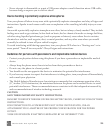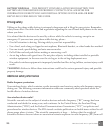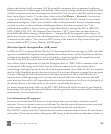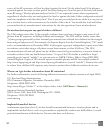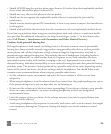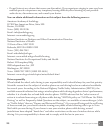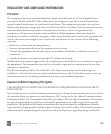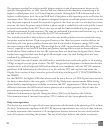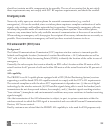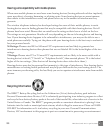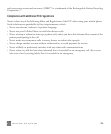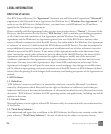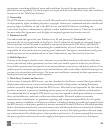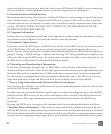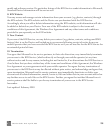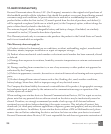
TWO User Guide - R1.0 - April 21, 2010 132
should not contain metallic components in its assembly. The use of accessories that do not satisfy
these requirements may not comply with FCC RF exposure requirements, and should be avoided.
Emergency calls
Never rely solely upon your wireless phone for essential communications (e.g., medical
emergencies), if it can be avoided, since a wireless phone requires a complex combination of radio
signals, relay stations, and landline networks for its operation. Consequently, emergency calls may
not always be possible under all conditions on all wireless phone systems. Your wireless phone,
however, may sometimes be the only available means of communication at the scene of an accident.
When making an emergency call, always give the recipient all necessary information as accurately as
possible. Never terminate an emergency call until you have received clearance to do so.
FCC enhanced 911 (E911) rules
Background
The Federal Communications Commission (FCC) requires wireless carriers to transmit specific
latitude and longitude location (Automatic Location Identification = ALI) information as well as
“911” calls to Public Safety Answering Points (PSAPs) to identify the location of the caller in case of
emergency.
Generally, the rules require that carriers identify an E911 caller’s location within 50 meters of the
actual location for 67 percent of calls and within 150 meters of the actual location for 95 percent of
calls.
ALI capability
The PB20ZU is an ALI-capable phone equipped with a GPS (Global Positioning System) receiver
supporting a satellite-based GPS ALI-capable network to comply with the FCC’s ALI requirements.
The network compliance with the above FCC requirements is dependent on: (a) the use of digital
technology by the wireless network; (b) GPS satellite signals being able to reach the handset (such
transmissions do not always work indoors, for example); and (c) handset signals reaching wireless
“base stations” (atmospheric and environmental conditions may cause variations in handset receiving
signal strength).
Also the transmission of the ALI information is subject, in part, to system constraints within the
wireless network to which the E911 signal is transmitted and over which Personal Communications
Devices, LLC has no control.
Finally, customers are advised that the PB20ZU ALI capability is to be used for E911 purposes only.



